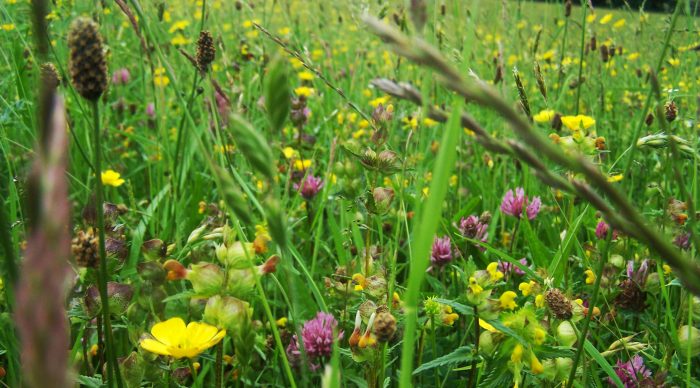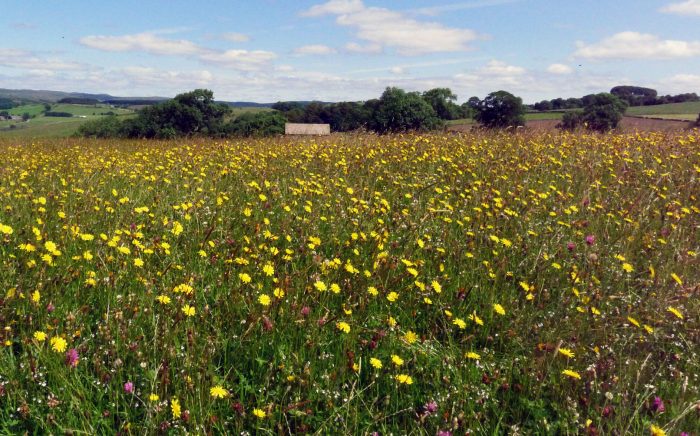Putting the buzz back into Bowland’s meadows
May 25, 2022
Wildflower-rich hay meadows contribute so much to wildlife and our landscape. Teeming with life, these priority habitats are important for farming, support extraordinary biodiversity and absorb carbon.
With more than 97% of our meadows already lost, our actions count more than ever to help save these incredible ecosystems for future generations.

Over the last decade Yorkshire Dales Millennium Trust has worked closely with landowners to help reverse the loss of hay meadows in the Yorkshire Dales and Forest of Bowland. And we are not alone, the appetite for restoring and creating meadows is growing.
Upland meadows in the Forest of Bowland
The hill farms of the Forest of Bowland are some of the last bastions of traditional wildflower meadows in England. Here, a significant number of the UK’s upland hay meadows remain.
“These meadows support countless species of invertebrates including bumblebees, solitary bees, butterflies, and spiders, with some species being mutually dependant such as globe flower and the Chiastocheta flies,” said Meadow Makers Project Officer, Carol Edmondson.
“In turn, these invertebrates feed our native mammals and birds which rely on our diverse meadows, making them an internationally
important habitat. In addition, studies now show that the deeper-rooted flowering meadow plants help slow the movement of water through the soil and sequester more carbon.”
Carol added: “The wildflower-rich Coronation Meadows at Bell Sykes Farm near Slaidburn are a Site of Special Scientific Interest (SSSI)
– some of the last unimproved flower-rich grasslands in this part of Lancashire.

“These special meadows are home to iconic northern upland species including meadow crane’s-bill, globe flower and melancholy thistle
along with a colourful mix of yellow rattle, eyebright, pignut, buttercups, clovers, vetches, knapweed, and our beautiful native orchids.
“In modern farming methods, the first cut of grass often happens in May for use as cattle fodder. Managing the meadows as traditional hay meadows means delaying cutting until later in the year – usually July or August – allowing these native species to flower and set seed. The project works with the farmers to collect a sustainable portion of the seed and distribute it to recipient meadows elsewhere across the county.”
Meadow Makers
In 2021, we restored nearly 40 hectares of hay meadow at 14 sites across the Forest of Bowland, as part of the Meadow Makers project, led by Plantlife. Sites included Hermitage Field at the Crook of Lune and Gathering Fields at Over Wyresdale. We worked with more than 1,500 volunteers and event participants planting more than 11,000 plug plants and distributed over 450kg of hay meadow seed from nine
donor sites.
Meadow Makers also teaches local groups how to collect seed, grow plugs, scythe, manage meadows for pollinators and create mini
meadows. The team has worked with the Millennium Seed Bank at Kew Gardens and even helped a local artisan distiller make a Hay Time Gin!
Meadow Makers continues YDMT’s vital work to restore the network of species-rich meadows across the Forest of Bowland. Find out more about the Meadow Makers project.






